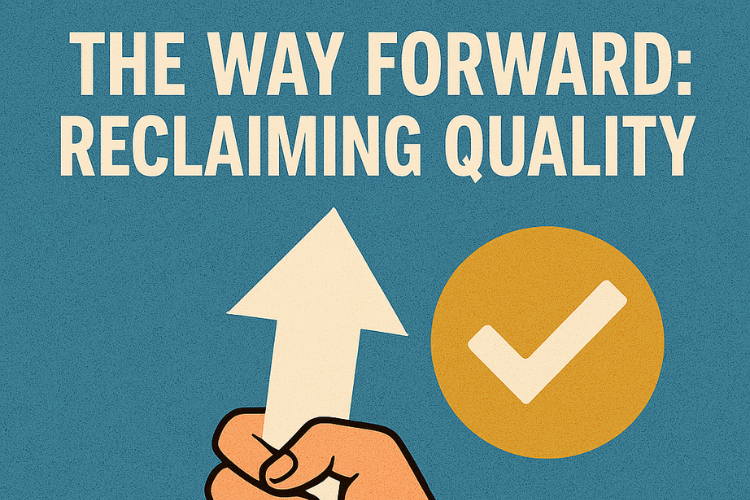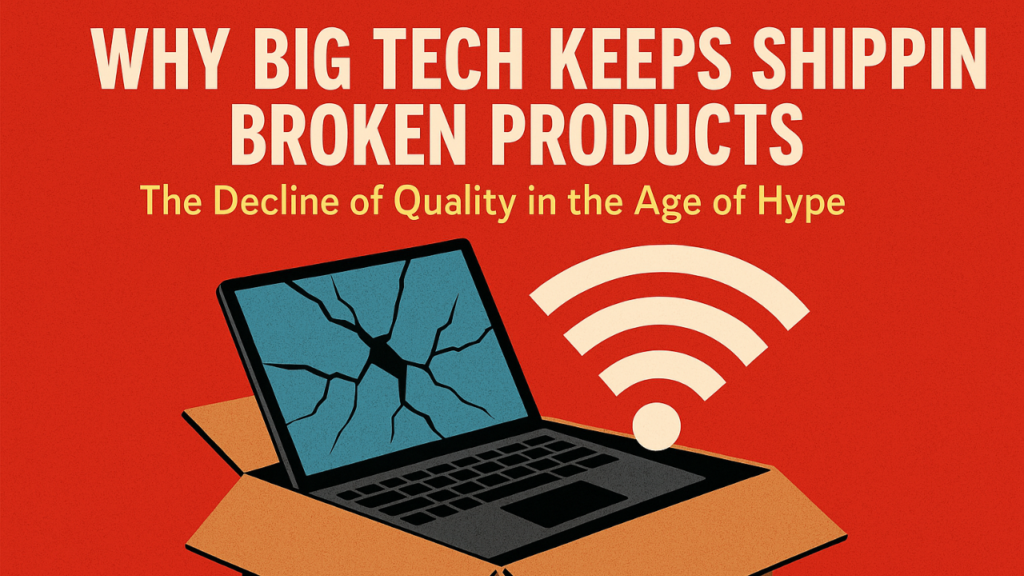Introduction
After spending over two decades in the tech industry, I’ve noticed something that should concern all of us: the steady decline in the quality of products from big tech companies. Despite having some of the best talent and endless resources, many of these companies push out products filled with bugs, fragile interfaces, and outdated components. The worst part? These issues rarely get fixed in a meaningful way. Instead, they’re patched with quick workarounds and wrapped in shiny new features.
So why does this happen? And what does it say about the direction our technology is heading? Let’s dig into the root causes and explore how we got here—and where we might be going.
1. The Quality Crisis in Big Tech
It’s not just your imagination—big tech products are getting worse. Whether it’s a messaging app that constantly crashes, a cloud service that silently fails, or a mobile OS update that breaks basic features, we’re all feeling the decline.
These are not small indie developers struggling with limited resources. These are trillion-dollar corporations. And yet, their products often come with flaky UIs, persistent bugs, and clunky performance. Users have learned to live with it or look for community-created fixes.
The quality crisis is real, and it’s spreading fast.
2. Chasing Stock Prices Over Craftsmanship
The main driver behind this crisis? Short-term thinking. In today’s corporate environment, stock performance often takes precedence over product performance. Executives chase quarterly gains instead of long-term product quality.
That means pushing out features that look exciting in a demo—even if they’re half-baked. It means shipping MVPs (Minimum Viable Products) and never going back to make them better. Craftsmanship is no longer a priority. Flashy sells; polished doesn’t.
This obsession with appearances over substance is creating a generation of products that dazzle at first glance but fail in real-world usage.
3. The AI Distraction
AI is the latest gold rush in tech. Everyone wants a piece. Every app, device, and tool now claims to be powered by AI. And while AI has genuine potential, its overuse is starting to hurt more than it helps.
Resources that could be used to improve usability, performance, and testing are being redirected toward integrating AI features—many of which add little value. Teams are stretched thin trying to “AI-ify” their product rather than fix existing problems.
AI has become a smokescreen. It promises innovation but often hides the decay underneath.
4. The Developer’s Dilemma
Not all hope is lost. There are developers inside these companies who care deeply about building great software. They want to fix bugs, refactor code, and create intuitive user experiences. But they’re stuck.
Why? Because management priorities are different. Budgets favor quick wins. Metrics reward new features, not stability or usability. Internal tools to measure success are flawed. Teams are evaluated by speed, not by satisfaction or retention.
This leaves quality-minded developers fighting a losing battle. Their voices are often drowned out by the noise of deadlines and investor updates.
5. Enshittification Explained
Cory Doctorow coined the term “enshittification” to describe the decline of digital products over time. It starts with a great user experience. Then, as the product gains users, the company begins to exploit them. Monetization ramps up. Features that don’t serve revenue goals are removed. Ads multiply. Data collection intensifies.
Eventually, the product that once felt magical becomes miserable. Users become trapped, relying on something they no longer enjoy but can’t escape.
This is the life cycle of many big tech products today. Quality drops not because it’s hard to maintain, but because it no longer aligns with corporate goals.
6. Locked-In Users, Locked-Out Innovation
Big tech thrives on dependency. Once users are hooked, switching becomes difficult. Data is locked in. Ecosystems are closed. Compatibility with other services is limited.
This strategy allows companies to get away with poor quality. Users tolerate issues because the cost of switching is too high. And because users stay, companies think they’re doing well.
But what’s actually happening is stagnation. Innovation slows. Competition dies. Users suffer.
7. The Way Forward: Reclaiming Quality
All is not lost. We don’t have to accept this as the new normal. What we need is a return to product excellence.
That means long-term thinking. It means rewarding teams not just for releasing new features, but for fixing old ones. It means investing in clean code, better testing, and thoughtful design.

Startups and smaller tech companies can lead this change. They’re more agile. They can focus on real innovation rather than performative upgrades. And if they prioritize quality, they’ll win hearts—and eventually, market share.
Conclusion
Big tech’s addiction to hype, short-term wins, and user lock-in is undermining the foundations of the products we rely on every day. The obsession with AI and rapid growth is distracting from what really matters: stability, usability, and long-term value.
But there’s hope. If users demand better—and if emerging startups prioritize product quality over quick profits—we might just see a renaissance of good software.
That’s the mission we believe in at StartupHakk: highlighting the hidden truths in tech and championing a better, more user-centered future for innovation.




